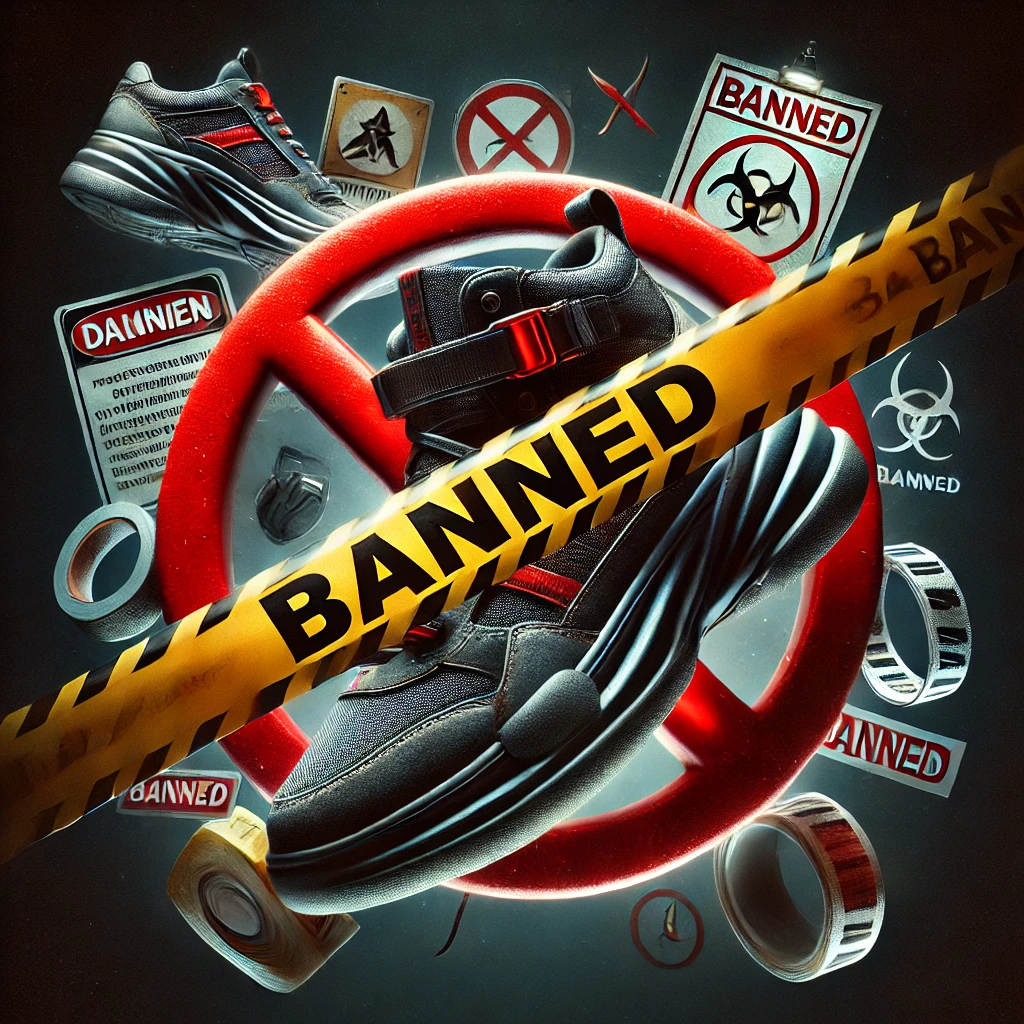Shoes are more than just fashion statements; they can be symbols of power, controversy, and even danger. Over the years, several shoe models have been banned worldwide due to various reasons, including unfair performance advantages, safety hazards, and cultural sensitivities. This article explores the top 15 globally banned shoes, detailing why they faced restrictions.
1. Nike Vaporfly NEXT%
- Banned by: World Athletics (partially)
- Reason: Provided an unfair advantage due to carbon-fiber plate and thick foam technology.
2. Adidas Predator 19+
- Banned by: Certain football leagues
- Reason: Controversial rubberized zones enhanced ball control beyond fair play standards.
3. Heelys (Wheeled Sneakers)
- Banned by: Schools, shopping malls, airports
- Reason: Safety concerns due to frequent injuries from falls.
4. Reebok Pump (Certain Models)
- Banned by: NCAA (at a point in time)
- Reason: The pump technology gave an unfair fit advantage.
5. Nike Air Jordan 1 (Bred Colorway)
- Banned by: NBA (1985)
- Reason: Violated uniform color rules; Michael Jordan was fined every time he wore them.
6. Fila Grant Hill 2 (Specific Markets)
- Banned by: Certain school districts
- Reason: Linked to gang culture.
7. Adidas Springblade
- Banned by: Some competitive running events
- Reason: Blade-like sole design gave excessive propulsion.
8. Under Armour Speedform Apollo
- Banned by: Select running competitions
- Reason: Considered performance-enhancing.
9. Nike Zoom Victory 3
- Banned by: Some athletic federations
- Reason: Ultra-lightweight spikes provided an unfair track advantage.
10. Vibram FiveFingers (Certain Gyms & Races)
- Banned by: Some fitness clubs and marathon races
- Reason: Legal issues around false health claims and potential foot injuries.
11. Balenciaga Triple S (Certain Nightclubs)
- Banned by: High-end nightclubs
- Reason: Bulky design led to security risks and injuries.
12. Yeezy Foam Runners
- Banned by: Certain workplaces
- Reason: Considered too casual and inappropriate for professional settings.
13. Puma Clyde Court Disrupt
- Banned by: NBA (temporarily)
- Reason: Bright colorways violated uniform regulations.
14. Nike MAG (Self-Lacing Sneakers)
- Banned by: Some high schools and sports federations
- Reason: High-tech lacing system provided unfair convenience.
15. Crocs (In Workplaces & Schools)
- Banned by: Hospitals, schools, and certain workplaces
- Reason: Safety hazards due to lack of proper foot support.
FAQs
1. Why are some shoes banned in sports?
Some shoes provide an unfair advantage due to performance-enhancing technology like carbon plates, excessive cushioning, or unique traction systems.
2. Are banned shoes illegal to buy?
Most banned shoes are still available for purchase but cannot be used in specific professional or regulated environments.
3. How can I know if a shoe is banned?
Check official sports regulations, school dress codes, and workplace policies before purchasing controversial footwear.
4. Do banned shoes ever make a comeback?
Yes, some shoes get re-released with modifications to meet regulatory standards.
These banned shoes highlight the fine line between innovation and fairness in footwear. Whether for safety, ethical concerns, or uniform compliance, these shoes made headlines for all the right (or wrong) reasons. Which banned shoe surprised you the most? Let us know in the comments!




I conceive this site holds some real superb info for everyone : D.